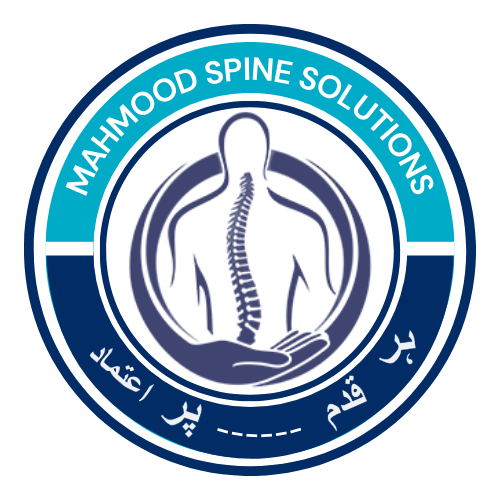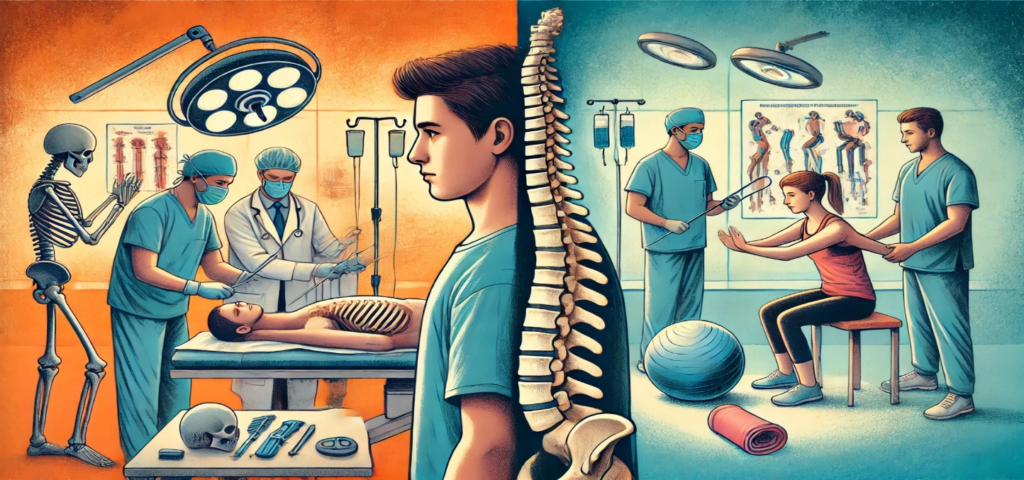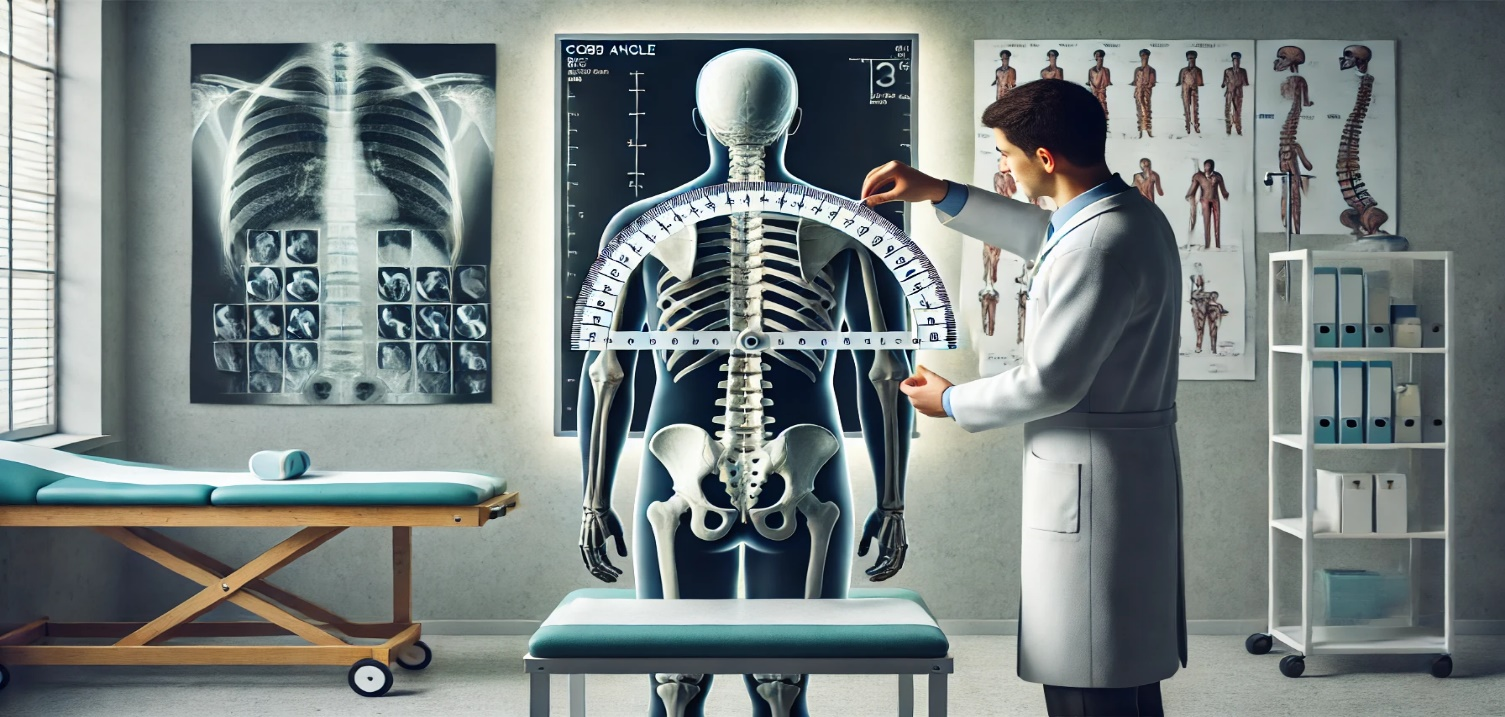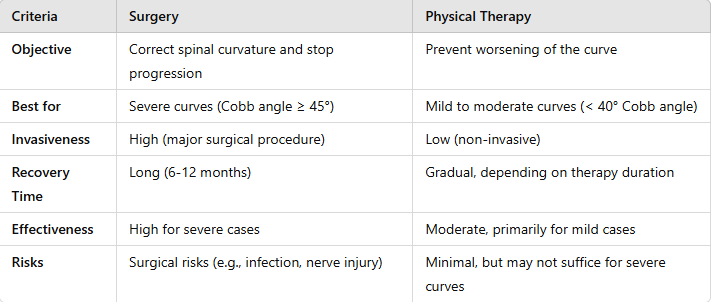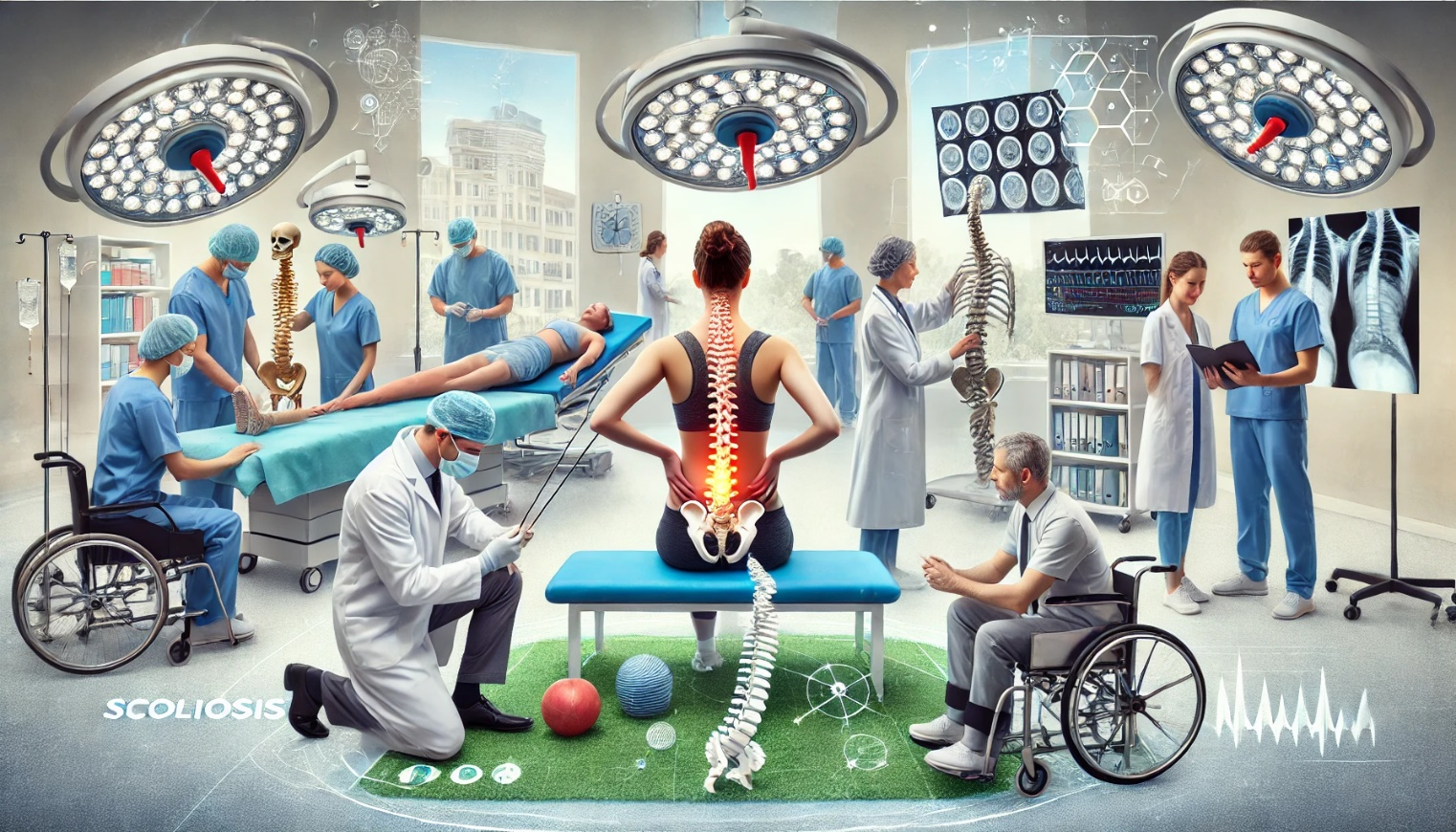Adolescent idiopathic scoliosis (AIS) involves a sideways curvature of the spine accompanied by vertebral rotation. Choosing between surgical and non-surgical treatment approaches depends on factors such as the curve’s severity, likelihood of progression, symptoms, and overall impact on the adolescent’s quality of life.
Surgical Treatment:
Surgery is generally recommended for severe scoliosis or when non-surgical options are ineffective.
When Surgery is Considered:
- Spinal curves measuring 45-50° or more (Cobb angle).
- Rapid curve progression despite the use of bracing.
- Significant spinal deformities causing cosmetic or functional issues.
- Rare cases involving pain, breathing difficulties, or neurological problems.
Surgical Procedures:
Posterior Spinal Fusion (PSF): The most common technique, where bone grafts and implants (like rods and screws) are used to align and stabilize the spine.
Anterior Spinal Fusion (ASF): An alternative approach, typically for specific curve patterns.
Vertebral Body Tethering (VBT): A newer option aimed at maintaining spinal flexibility, suitable for younger patients still experiencing growth.
Advantages of Surgery:
- Provides substantial correction of the spinal curve.
- Prevents further progression of the deformity.
- Improves posture and overall spinal alignment.
Potential Risks:
- Complications such as infection, nerve damage, or excessive bleeding.
- Loss of spinal flexibility, especially in fusion procedures.
- Possibility of hardware issues or problems in adjacent spinal segments over time.
- Recovery involves significant time and post-operative restrictions (6-12 months).
Long-Term Outcomes:
- Surgery is highly effective in halting progression and achieving spinal stability, with most patients reporting improved quality of life post-recovery.
Non-Surgical Treatment (Physical Therapy):
Physical therapy is often part of a conservative treatment plan, particularly for mild to moderate cases of AIS.
When Physical Therapy is Used:
- Spinal curves less than 25°, or curves between 25-40° when the risk of progression is low.
- Patients who prefer to avoid surgery or have minimal symptoms.
Key Approaches:
- Schroth Therapy: A specialized program designed to improve posture, breathing mechanics, and spinal alignment through targeted exercises.
- Bracing : Commonly paired with physical therapy to slow curve progression, especially during periods of rapid growth (e.g., Boston brace, Rigo-Cheneau brace).
- General strengthening exercises for the core, along with posture and flexibility training.
Advantages of Physical Therapy:
- Non-invasive with minimal risk of complications.
- Helps maintain spinal flexibility and strengthen muscles.
- Empowers patients to actively manage their condition.
Limitations:
- Less effective for severe spinal curves or rapidly progressing scoliosis.
- Requires consistent adherence to therapy and bracing for optimal results.
- Does not reverse existing deformities; focuses on stabilization.
Expected Outcomes:
Effective for slowing or halting progression in mild to moderate cases, especially when initiated early in the disease process.
Comparison of Surgery and Physical Therapy:
Conclusion:
Surgery is often the preferred option for severe scoliosis because it provides lasting correction and prevents progression. On the other hand, physical therapy is suitable for managing mild or moderate cases, particularly when early intervention is possible. Both approaches have their advantages and limitations, so treatment decisions should be guided by a multidisciplinary team that includes orthopedic specialists and physical therapists to tailor the plan to the individual patient’s needs.
About Authors
Dr. Muhammad Mahmood Ahmad is a Spinal as well as an Orthopedic Surgeon with over 14 years of experience currently practicing at Razia Saeed Hospital, Multan.
